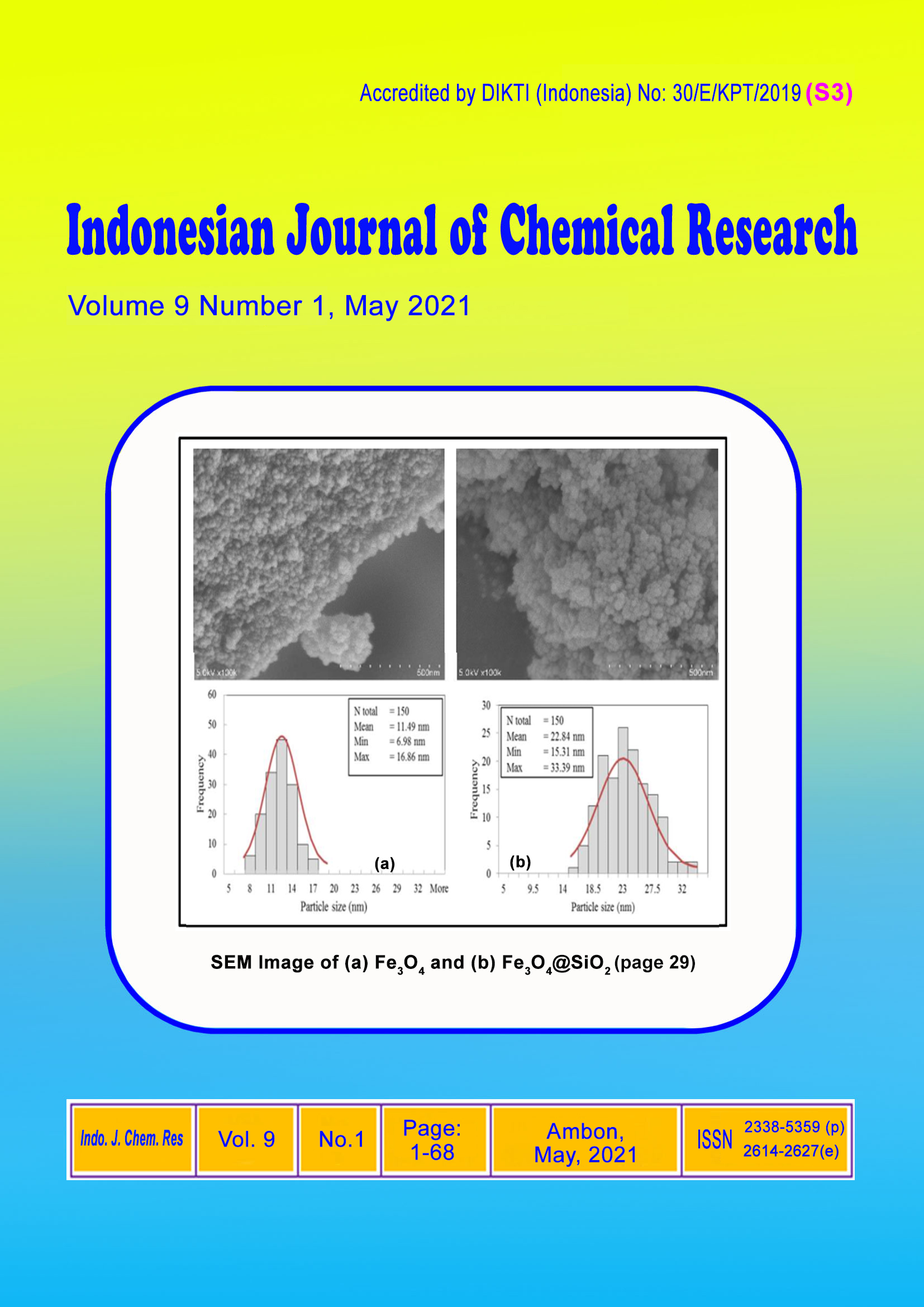Recovery of Gold in Au/Cu/Mg System from SH/Fe3O4@SiO2 as a Magnetically Separable and Reusable Adsorbent
Abstract
The recovery of Au(III) in the Au/Cu/Mg system from mercapto-silica hybrid coated magnetite (SH/Fe3O4@SiO2) adsorbent has been investigated. This adsorbent characterized using FT-IR to determine functional groups, crystallinity study using XRD, surface morphology using SEM, material compositions with XPS, surface area using nitrogen adsorption, and TGA to study thermal stability. Adsorption of metal ions carried out with batch system for 30 minutes at a pH of 3. In the Au/Cu/Mg multi-metal system, Au(III) ions were easily desorbed (approximately 85%) by SH/Fe3O4@SiO2 adsorbent based on HSAB (Hard Soft Acid Base) theory that Au(III) ion is a softer metal than Cu(II) and Mg(II) where Au(III)>Cu(II)>Mg(II). The recovery of Au(III) ions was easily desorbed using thiourea 7% in 0,1 M HCl solution with the percentage of 79%. The process of SH/Fe3O4@SiO2 adsorbent separation after adsorption and recovery was very easy. The adsorbent could perfectly separate in 5 minutes using an external magnet. The SH/Fe3O4@SiO2 adsorbent can be reused on the adsorption-desorption process of Au(III) in the Au/Cu/Mg system approximately four times of cycle reactions.
Downloads
Copyright (c) 2021 Ani Qomariyah

This work is licensed under a Creative Commons Attribution-NonCommercial-NoDerivatives 4.0 International License.
Authors who publish with this journal agree to the following terms:
- Copyright on any article is retained by the author(s).
- The author grants the journal, the right of first publication with the work simultaneously licensed under a Creative Commons Attribution License that allows others to share the work with an acknowledgment of the work’s authorship and initial publication in this journal.
- Authors are able to enter into separate, additional contractual arrangements for the non-exclusive distribution of the journal’s published version of the work (e.g., post it to an institutional repository or publish it in a book), with an acknowledgment of its initial publication in this journal.
- Authors are permitted and encouraged to post their work online (e.g., in institutional repositories or on their website) prior to and during the submission process, as it can lead to productive exchanges, as well as earlier and greater citation of published work.
- The article and any associated published material is distributed under the Creative Commons Attribution-NonCommercial-NoDerivatives 4.0 International License.






_copy1.png)










